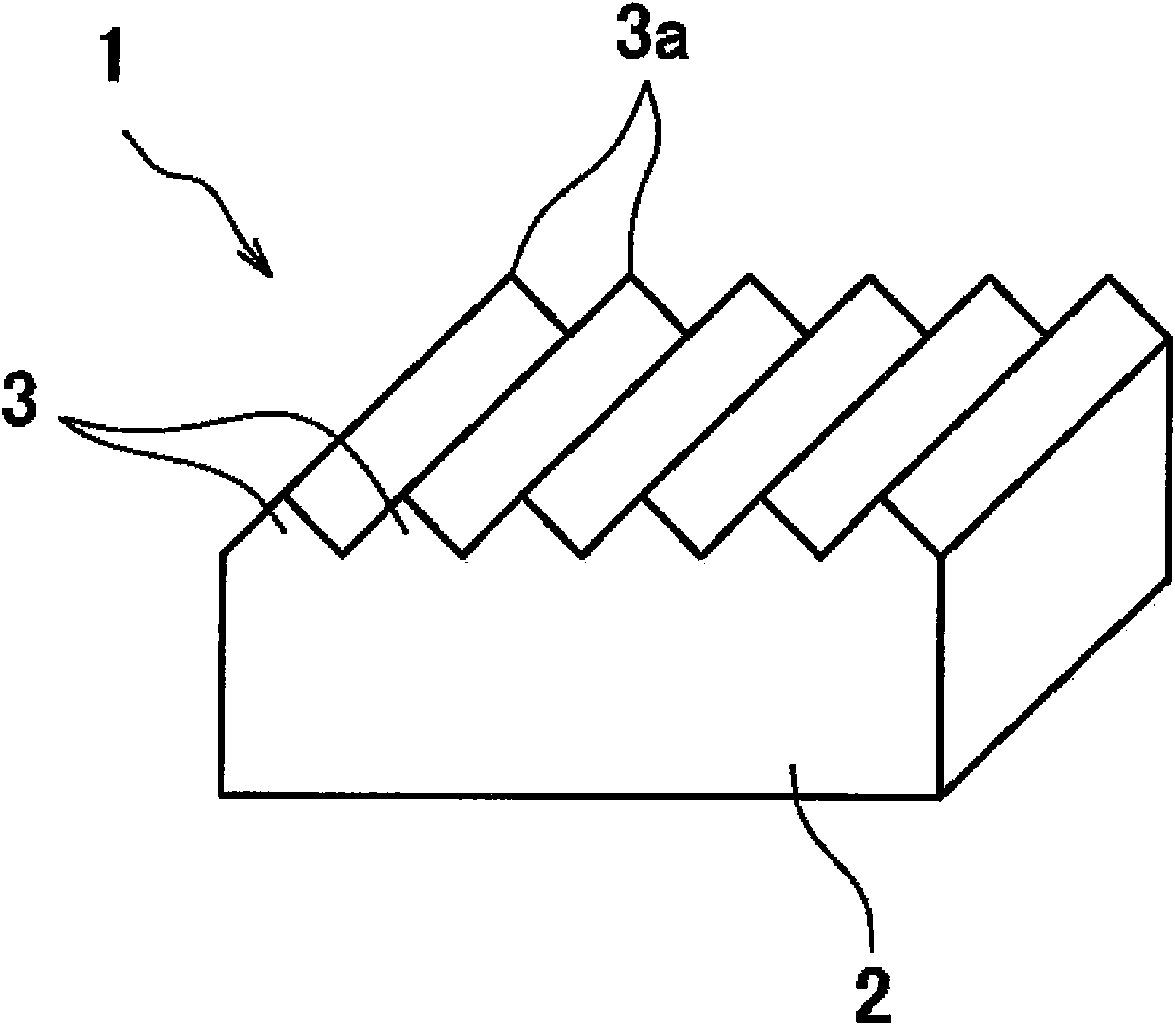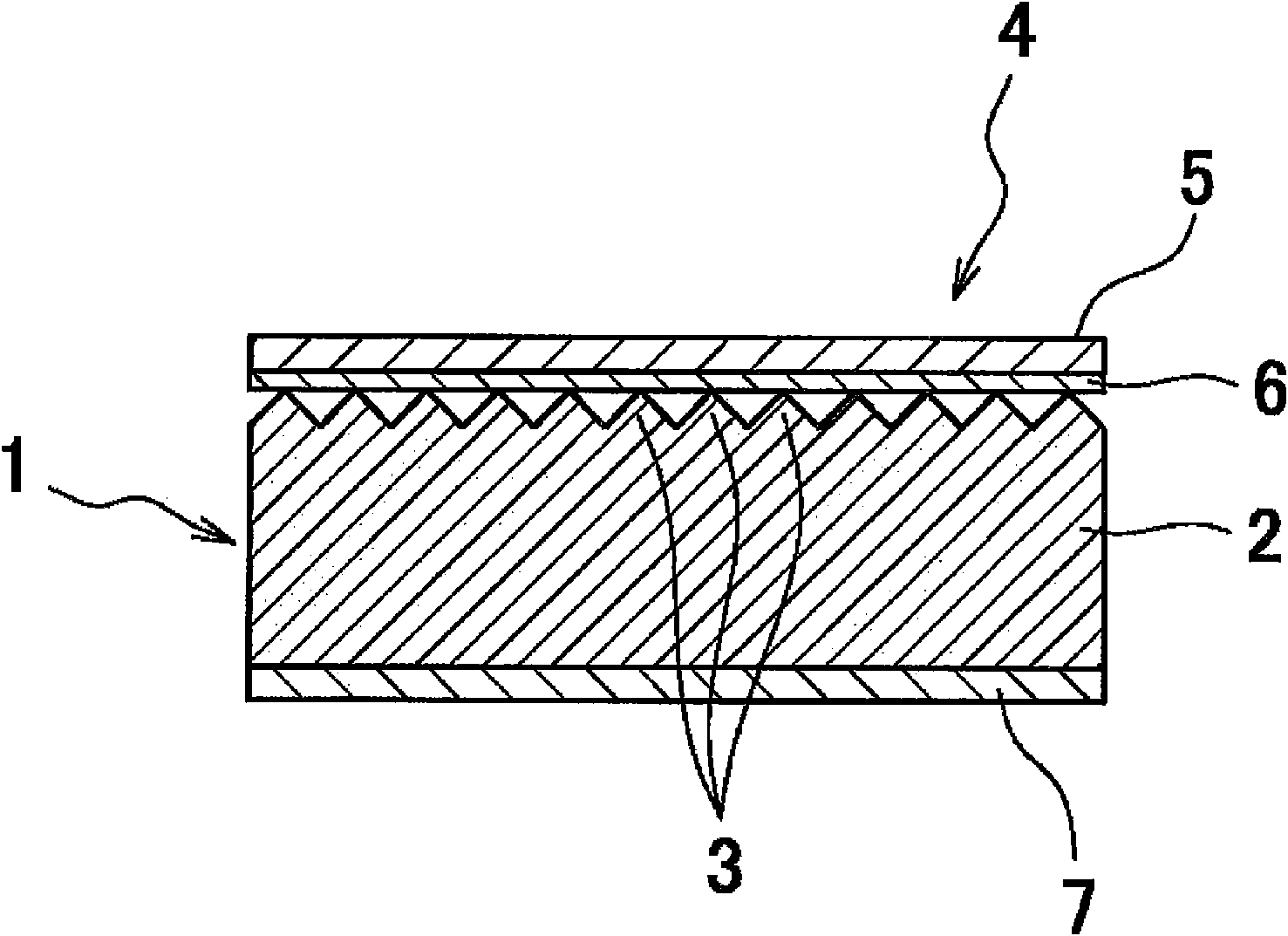Surface protective film
A surface protection film, a representative technology, applied in the direction of pressure-sensitive film/sheet, film/sheet adhesive, adhesive type, etc., can solve the problem of increasing the manufacturing cost of the adhesive layer and the increase in the degree of adhesion. , into the problems of increased depth, etc., to achieve the effects of excellent expandability, inhibition of adhesion deterioration, and prevention of paste residue
- Summary
- Abstract
- Description
- Claims
- Application Information
AI Technical Summary
Problems solved by technology
Method used
Image
Examples
Embodiment 1~8、 comparative example 1~7
[0241] 30 parts by weight of Alcon P100 (manufactured by Arakawa Chemical Industry Co., Ltd.) as a tackifier, and 30 parts by weight of Irganox 1010 (Ciba Specialty Chemicals) 1 part by weight to obtain each adhesive composition. Its composition is shown in Table 2 below.
[0242] Using polypropylene (J715M manufactured by Prime Polymer Co., Ltd.) as the base material, the base material and each binder composition were coextruded by the T-die method, thereby obtaining a base material layer formed with a thickness of 34 μm. The surface protection films of Examples 1-8 and Comparative Examples 1-7 obtained by laminating and integrating with an adhesive layer with a thickness of 6 μm, and wound on a paper core with an inner diameter of 3 inches.
[0243] (Evaluation)
[0244] The following items were evaluated about each surface protection film obtained by the said method. The results are shown in Table 3.
[0245] (1) Film-forming properties
[0246] The appearance of each ...
Embodiment 9
[0271] In 100 parts by weight of the copolymer composition of Synthesis Example 4, 18 parts by weight of AlconP100 (manufactured by Arakawa Chemical Industry Co., Ltd.) as a tackifier and 1 part by weight of Irganox1010 (manufactured by Ciba Specialty Chemicals) as an antioxidant were mixed as 0.5 parts by weight of Tinuvin 326 (manufactured by Ciba Specialty Chemicals) as an ultraviolet absorber was kneaded to obtain an adhesive composition.
[0272] Using polypropylene (J715M manufactured by Prime Polymer Co., Ltd.) as the base material, the base material and the adhesive composition were co-extruded by the T-die method, thereby obtaining a base material layer with a thickness of 34 μm and a thickness of A surface protection film obtained by laminating and integrating an adhesive layer of 6 μm, and wound around a paper core with an inner diameter of 3 inches.
Embodiment 10、11、13、 comparative example 8~10
[0274] The adhesive composition was mixed as shown in Table 4, and the roll body of the surface protection film was obtained by the method similar to Example 9.
PUM
| Property | Measurement | Unit |
|---|---|---|
| height | aaaaa | aaaaa |
| height | aaaaa | aaaaa |
| surface roughness | aaaaa | aaaaa |
Abstract
Description
Claims
Application Information
 Login to View More
Login to View More - R&D
- Intellectual Property
- Life Sciences
- Materials
- Tech Scout
- Unparalleled Data Quality
- Higher Quality Content
- 60% Fewer Hallucinations
Browse by: Latest US Patents, China's latest patents, Technical Efficacy Thesaurus, Application Domain, Technology Topic, Popular Technical Reports.
© 2025 PatSnap. All rights reserved.Legal|Privacy policy|Modern Slavery Act Transparency Statement|Sitemap|About US| Contact US: help@patsnap.com



